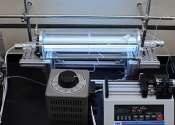World's first industrial model of a flow photo-on-demand synthesis system that uses chloroform as the precursor
Various chemical products, such as polymers and pharmaceutical intermediates, are currently synthesized with phosgene as their precursor or raw material. However, phosgene is highly toxic and this usage poses safety risks. ...









